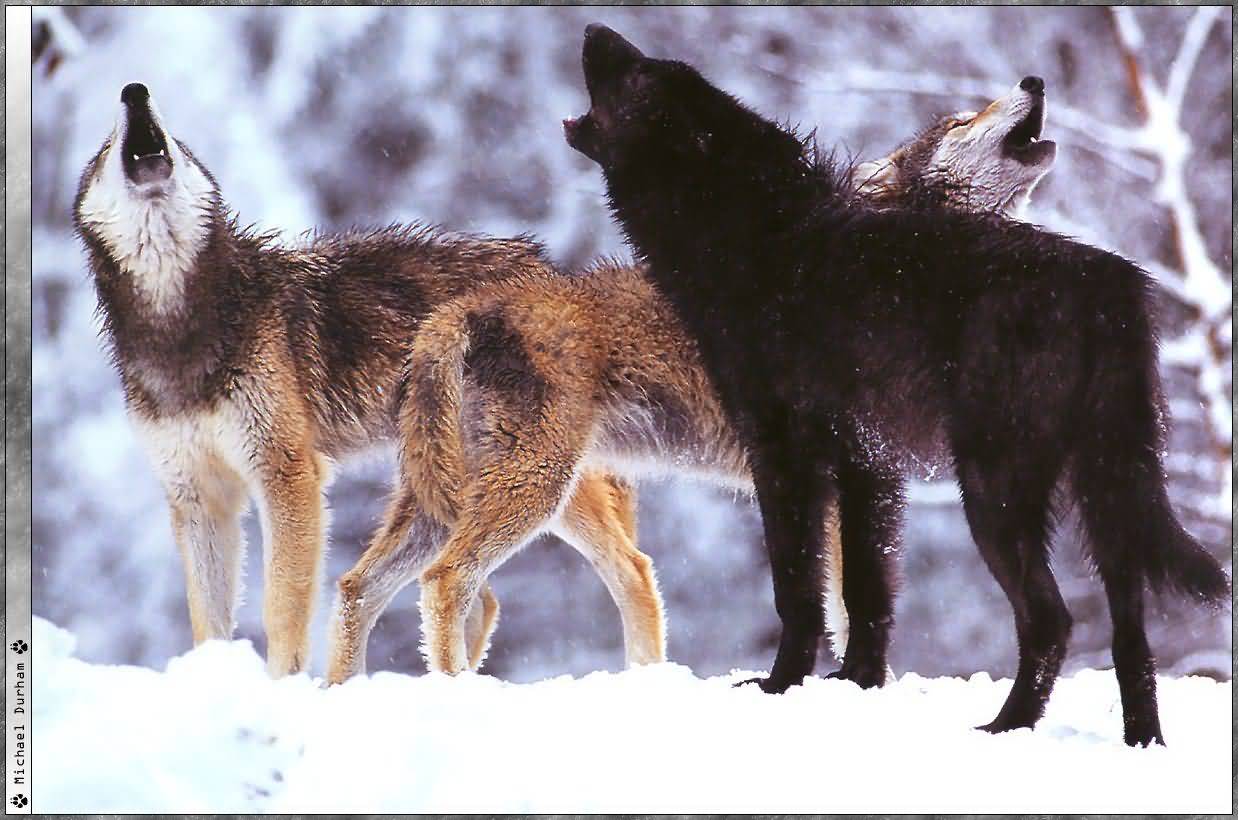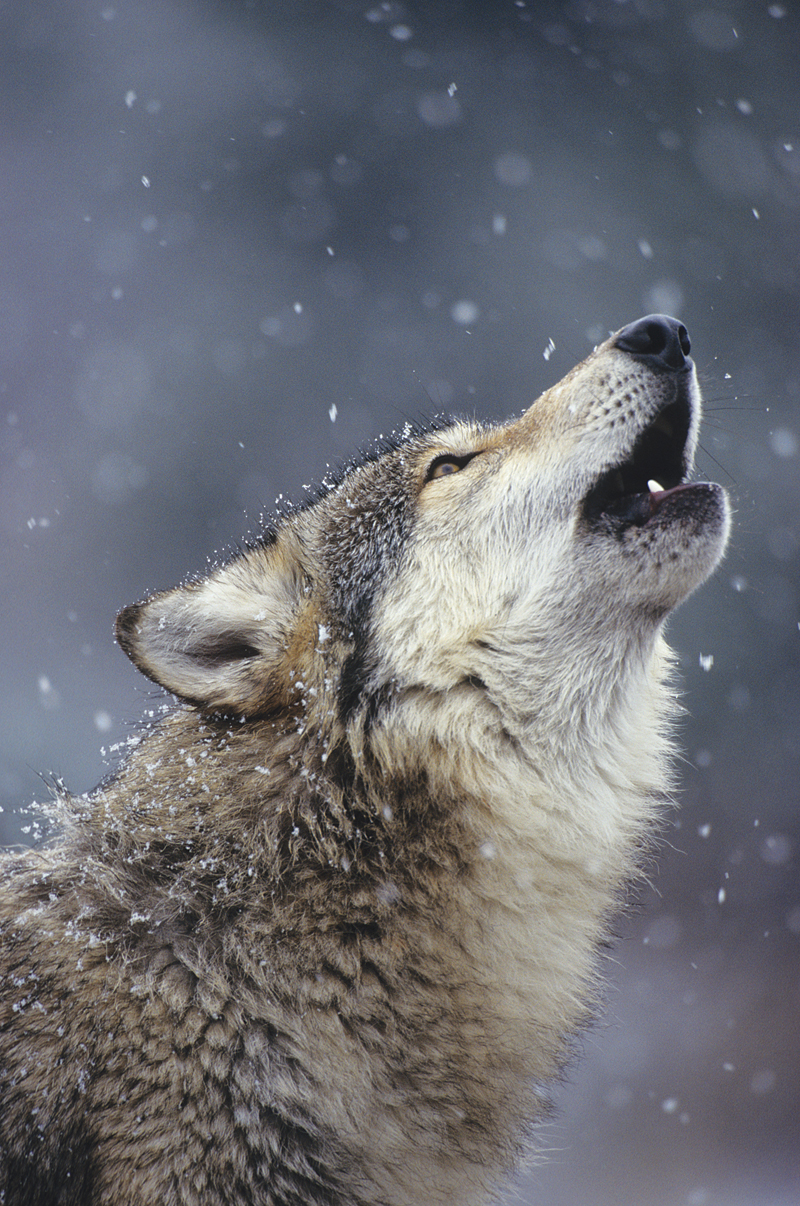

Wolves use their howl to communicate with each other. A lone wolf howls to gain the attention of the members of its pack, while group howls send territorial messages from one pack to the next. Sometimes when a wolf howls it is because that howl has been implicated by a wolf nearby. It is the same as a dog barking. If a dog nearby starts barking it will set off a chain reaction with other dogs nearby.

Wolves can communicate by using body scents, paw glands, body language, yips, and barks. They urinate and use that scent to mark their territory. In their paws are scent glands. Wolves use them to leave a scent mark for others to track.
Wolves also communicate by howling, yipping, and barking. Wolves bark and yip when others are close by to interact with one another. Their howl can be heard from as far as a distance of six miles. They also use it to warn the others.
Wolves live and hunt in packs of around six to ten. They usually go after large animals like deer and elk but they also eat smaller animals like birds and lizards. There is a hierarchy in the pack. At the top there is the alpha male with his mate not far behind. At the bottom ofthe pack you have the omegas also known as the outcasts of the pack. They are the lastof the wolves to eat and the weakest ones can be attacked by other members of thepack and are known to be killed.
Wolves that are lower in rank often submit to their superiors or face severe consequences. When a wolf wants to show that it is submissive to another wolf, it will crouch, whimper, tuck in its tail, lick the other wolf's mouth or roll over on its back. When a wolf wants to challenge another wolf, it will growl or lay its ears back on its head.
National Geographic